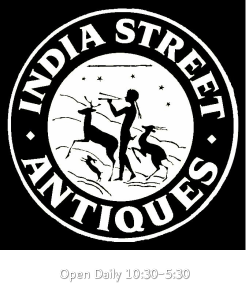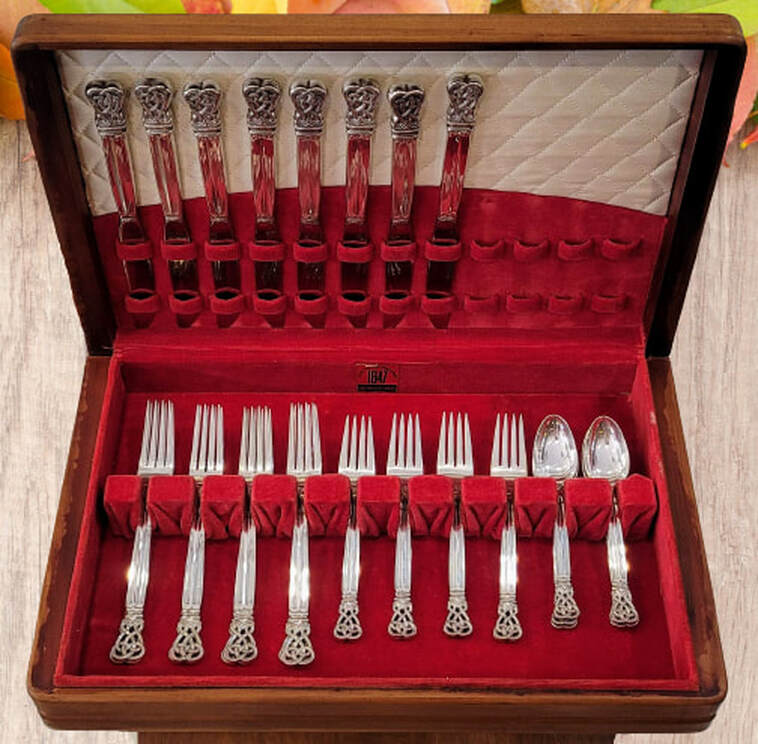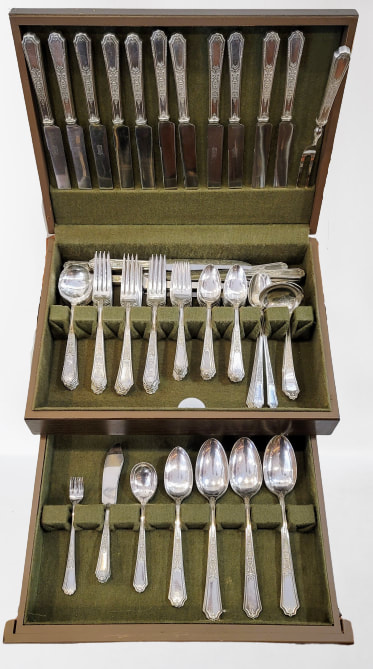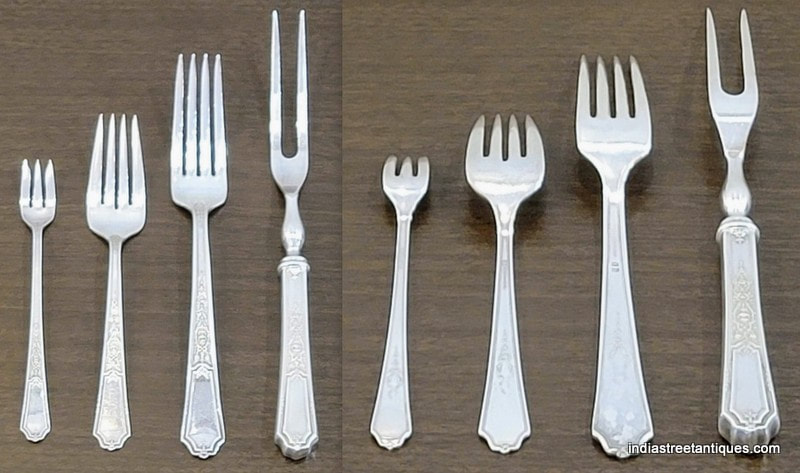Architectural Salvage and Decor
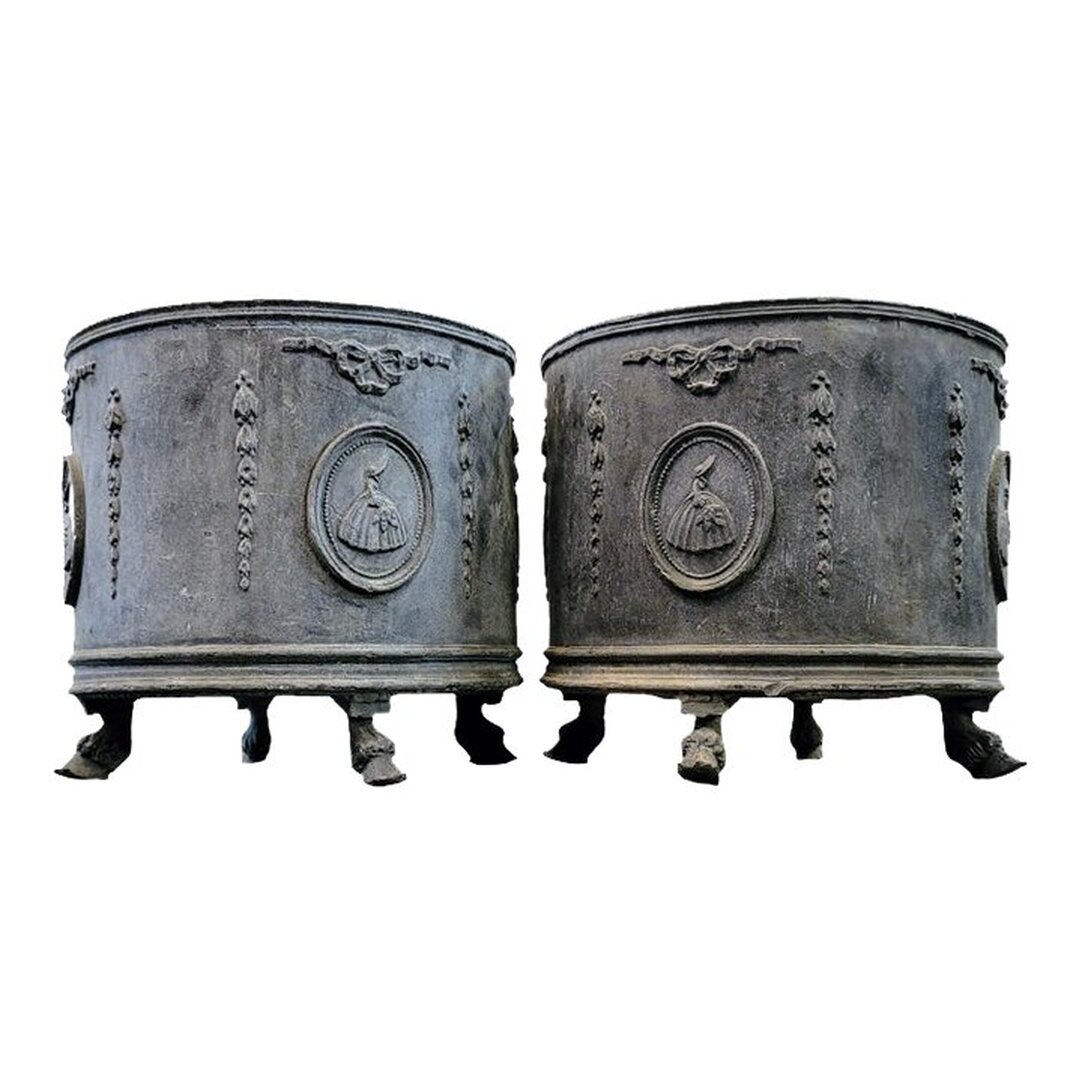
Cast Lead Planters | c. 1915 | England
Antique cast lead round garden planters date to the 1910s and were made in England.
The circular planters stand on four hairy pied-de-biche ( deer's foot ) hoof feet.
The decorative motifs include ribbon bows and flower husk pendants framing cartouches of women in antebellum gowns and bonnets. The motifs are repeated four times around the body of the planter.
SIZE:
13.25" diameter pots, measured to outside edge
12" approximate diameter inside
12" high
10.25" width, foot-to-foot
14" depth foot-to-foot
sold
Click on the image above to learn more and to view more photos.
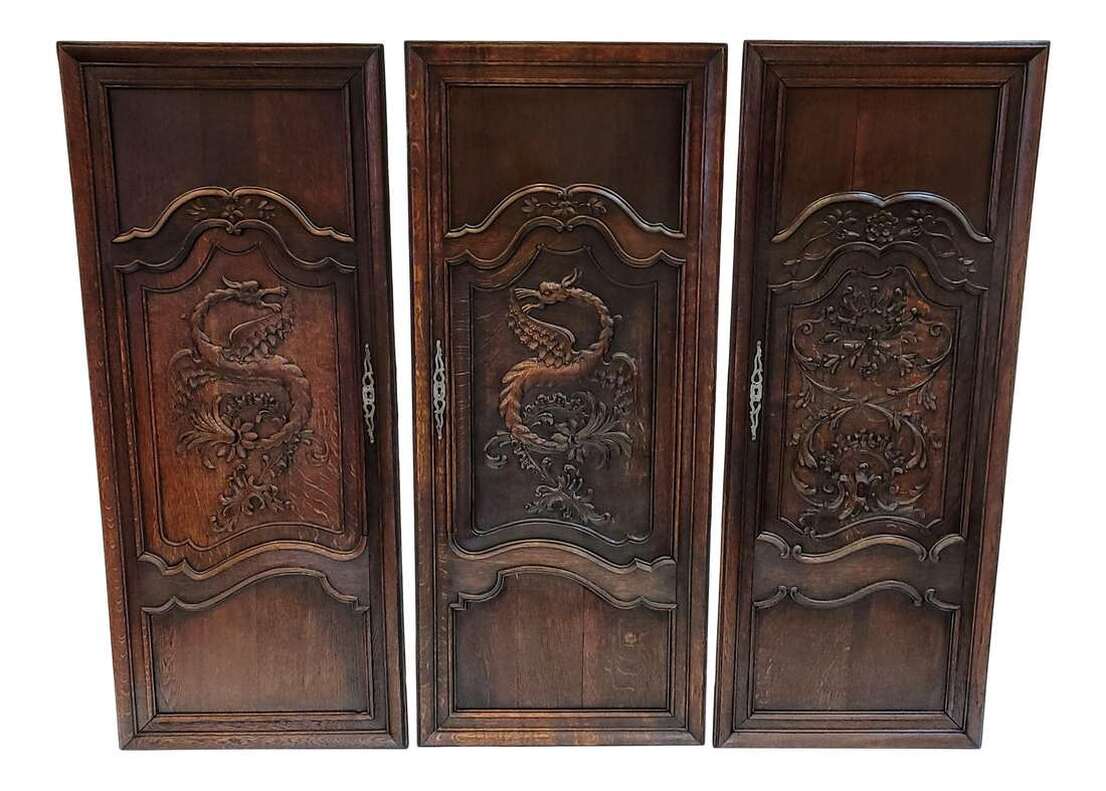
Armoire Doors | French Oak | Late-1800s
Three antique French oak armoire doors outfitted as hanging decorative wall panels.
Door panels date to the late-1800s and are in the French styles popular at the time of Japonisme, Gothic Revival, and Art Nouveau.
Two doors feature carvings of European style flying dragons in the manner of Gabriel Viardot, who created Japonisme furnishings in France after viewing the Chinese and Japanese furniture displayed at the 1867 Exposition Universelle in Paris.
The third door features carved foliated arabesques in rocaille style.
The carved panels are surrounded by scrolled frames.
The fronts retain the scrolled brass keyhole escutcheons.
The dragon panels measure 25.25" wide x 1.5" deep x 60" ( 5' ) high.
The foliate panel measures 23.5" wide x 1.5" deep x 60" high.
The backs have been fitted with hanging mounts and wire so that the doors may be displayed as decorative wall panels.
Panels may also be incorporated as built in paneling and as doors in furniture or framed for larger door use.
Click on the image above to learn more and to view further photos.
2995
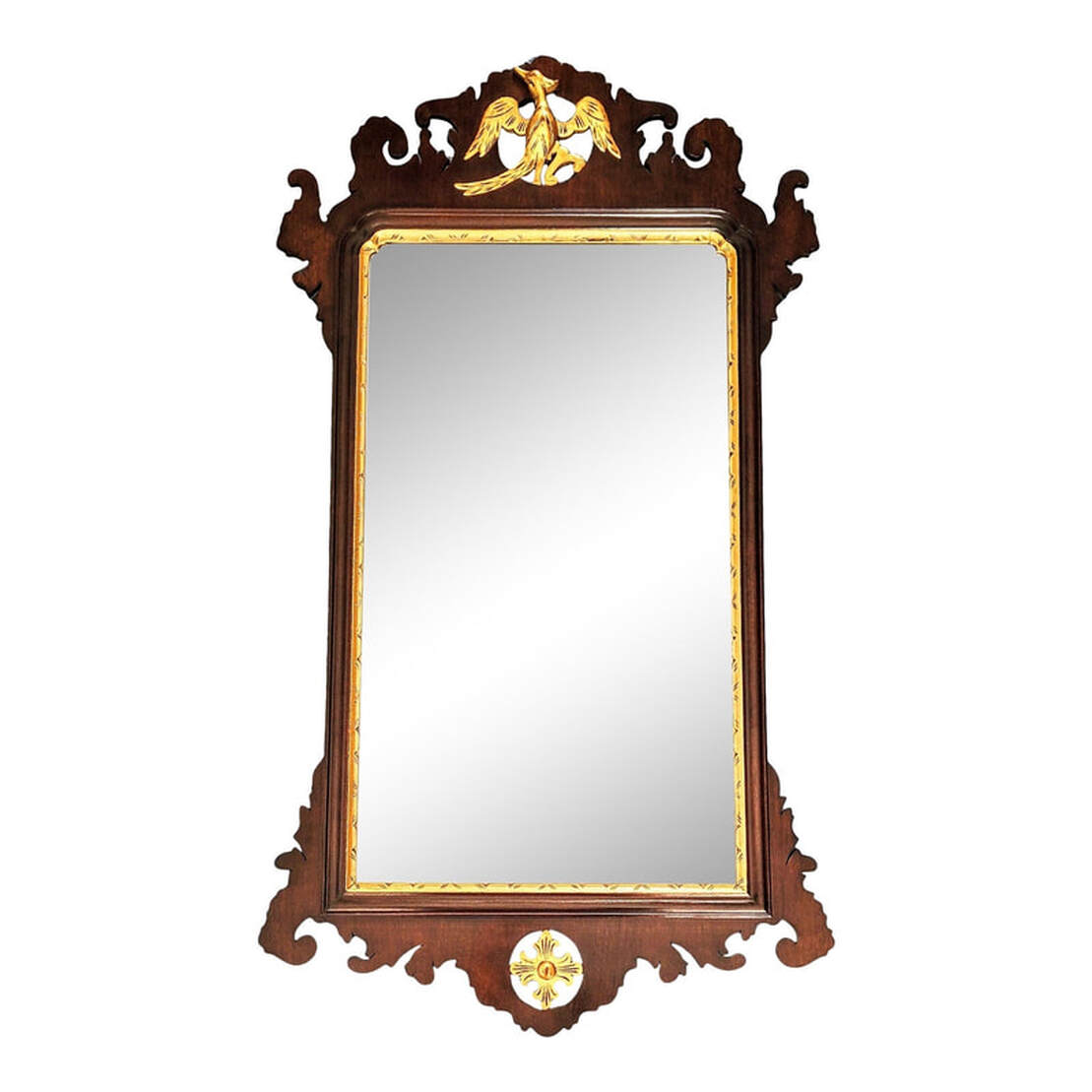
Wall Mirror | Chippendale Style | Wallace Nutting | 1925-1930s | U.S.A.
Vintage Wallace Nutting mirror surrounded by mahogany wood sawed open fretwork and decorated with carved gilt decorations.
Rectangular beveled looking glass in a parcel gilt carved mahogany frame.
At top is a carved and gilded bird, a crane with a crest feather resting on a branch.
At bottom is a carved and gilded foliated quatrefoil.
The back is covered with a fruit wood panel and is marked multiple times with the Wallace Nutting block letter iron brand signature which was in use from 1925 through the 1930s.
Click on the image above to learn more and to view further photos.
23.5ʺW × 2.75ʺD × 42.5ʺH
sold

Regency Banner Shield | England
English Regency turned mahogany adjustable pole fire shield in the Georgian style of the mid-to-late-18th-century.
The pole is turned ringed mahogany with an urn finial at top.
The pole is attached to a trio of sabre legs ending in squared brass caps and casters.
The banner shield is a rectangular mahogany wood frame with a glass front housing original ink, watercolor, and pastel gambling artwork.
Click on the image above to learn more.
20.5ʺW × 20.5ʺD × 65.5ʺH
1549
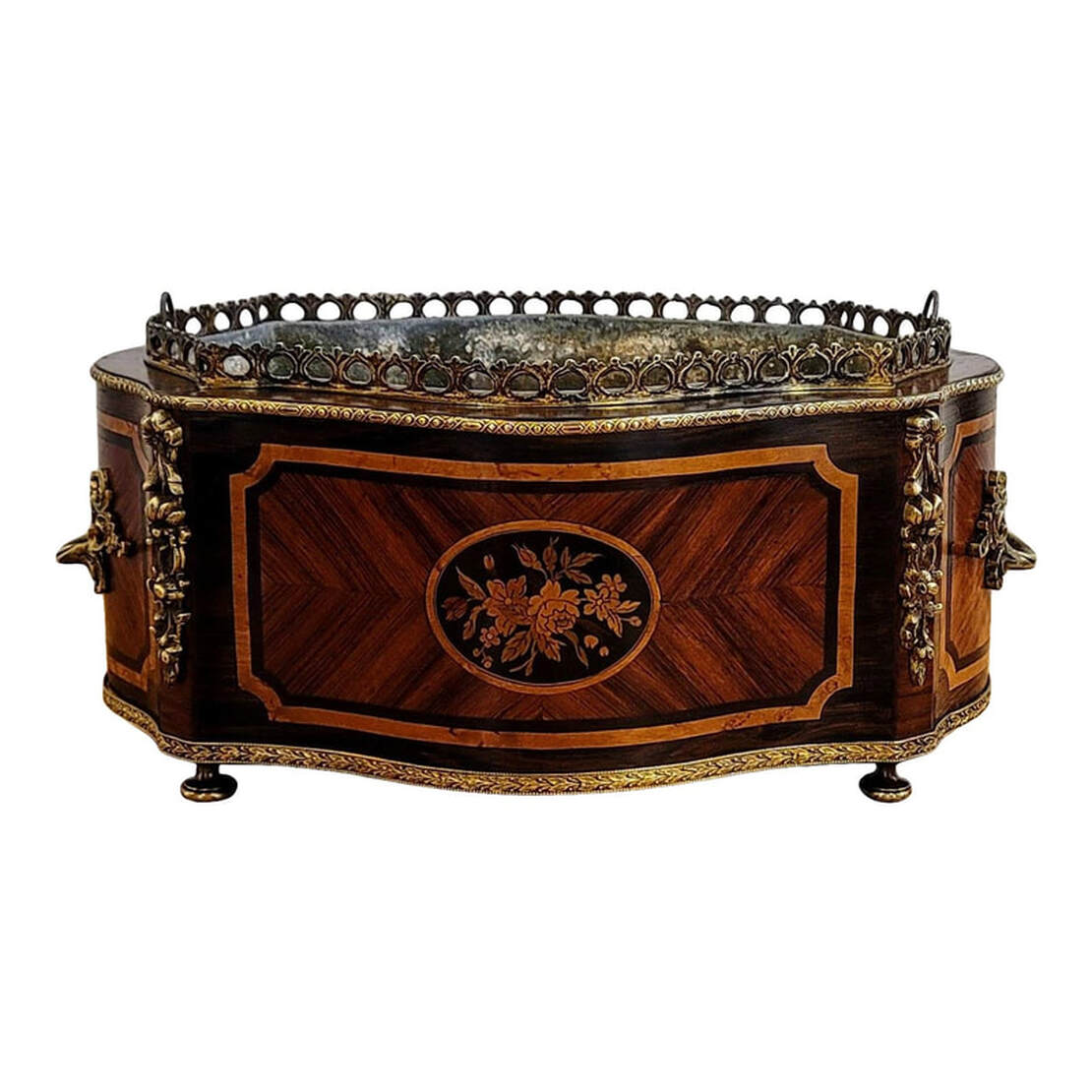
SOLD
Marquetry Jardiniere | Napoleon III | France
Antique jardiniere for tulips and orchids from the French period of Napoleon III, 1850-1870.
The rosewood bombe shaped cachepot is decorated with veneer work in amboyna, yew, satinwood, kingwood, ebony and mahogany.
The front and back feature a floral marquetry cartouche surrounded by amboyna banding, chevroned veneer, and all framed with ebony and amboyna banding.
The sides are mounted with gilt bronze scrolled acanthus leaf handles over chevron veneer and framed with shaped banding in ebony and amboyna woods.
On the top is a gilt bronze gallery pierced with a peacock tail eye design.
The top and bottom edges are decorated with applied stamped decorative gilt bronze banding. The top banding is stamped with guilloche strapping. The bottom banding is stamped with a laurel leaf design.
The four corners are decorated with gilt bronze ormolu floral pendants.
The planter stands upon four turned gilt bronze knob feet.
The jardiniere insert is bombe-shaped zinc with a ring pull on either side that folds down inside the insert.
Click on the image above to learn more and to view further photos.
16ʺW × 9.75ʺD × 5.5ʺH
sold

Gothic Panel | Carved Oak | France
High Gothic tracery carved oak wood panel in oak frame.
Designs within the tracery include roundels, daggers, and cusps.
Two Gothic arches are carved over coats of arms. One coat of arms features a crown over a shield with a crosslet / cross bottony / cross trefly, or cross with trefoil tips. The second coat of arms features a crown over a shield with a trio of fleur-de-lis.
Click on the above image to learn more and to view more photos.
17.75ʺW × 1.5ʺD × 24.5ʺH
995

Games Box | Regency | circa 1820s | United Kingdom
Antique Brazilian Rosewood canted rectangular box is decorated applied and inlaid brass work.
The lid features trim of applied foliated brass surrounding inlaid brass banding around a central inlaid foliated brass cartouche.
Below the brass trim and at the base of the box is carved gadrooning.
The box stands on turned rosewood knob feet.
The box does lock and comes with the original key and silk tassel. The lock and the foliated escutcheon are brass.
11ʺW × 9ʺD × 3.75ʺH
1250
Click on the photo to learn more.

Flatware Set | Sir Christopher Pattern | Wallace Silversmiths | Wallingford, Connecticut | 1936
Boxed vintage Sterling Silver flatware set in the Sir Christopher pattern, created and introduced in 1936 by Wallace Silversmiths, Inc / Robert Wallace & Sons, Wallingford, Connecticut.
The Sir Christopher pattern was created to honor renowned British architect Sir Christopher Wren.
The Sir Christopher Pattern was designed by William Warren, the most famous of the Wallace designers. William Warren also designed the Grand Baroque pattern which is considered to be one of the most popular patterns ever produced in Sterling Silver flatware.
The Sir Christopher pattern is an English Renaissance style with an intricate chased design.
The pattern was advertised until about 1950.
2295
Click on the photo to learn more.
SOLD
Silver plated flatware set stamped "1847 Rogers Bros." in the Ancestral pattern, introduced in 1924.
Knives feature INSICO (International Silver Company) stainless steel blades.
Sterling Silver Plated Flatware Set in Box consists of:
7 Dinner Knives with French Blades at 9.25"
11 Dinner Knives with French Blades at 9 5/8"
18 Dinner Forks at 7.5"
12 Salad / Dessert Forks at 6.25"
23 Tea Spoons at 6 1/8"
3 Oval Dessert Spoons at 7.25"
6 Iced Tea Spoons at 7.5"
2 Gravy Ladles at 6"
1 Carving / Serving Fork at 8.5"
2 Seafood / Cocktail Forks at 5.25"
6 Bouillon Spoons at 6 7/8"
5 Serving Spoons at 8.25"
3 Sugar Shells / Sugar Spoons at 5 7/8"
3 Master Butter Knives at 6.75"
895
Click on any of the photos above to learn more.
Knives feature INSICO (International Silver Company) stainless steel blades.
Sterling Silver Plated Flatware Set in Box consists of:
7 Dinner Knives with French Blades at 9.25"
11 Dinner Knives with French Blades at 9 5/8"
18 Dinner Forks at 7.5"
12 Salad / Dessert Forks at 6.25"
23 Tea Spoons at 6 1/8"
3 Oval Dessert Spoons at 7.25"
6 Iced Tea Spoons at 7.5"
2 Gravy Ladles at 6"
1 Carving / Serving Fork at 8.5"
2 Seafood / Cocktail Forks at 5.25"
6 Bouillon Spoons at 6 7/8"
5 Serving Spoons at 8.25"
3 Sugar Shells / Sugar Spoons at 5 7/8"
3 Master Butter Knives at 6.75"
895
Click on any of the photos above to learn more.
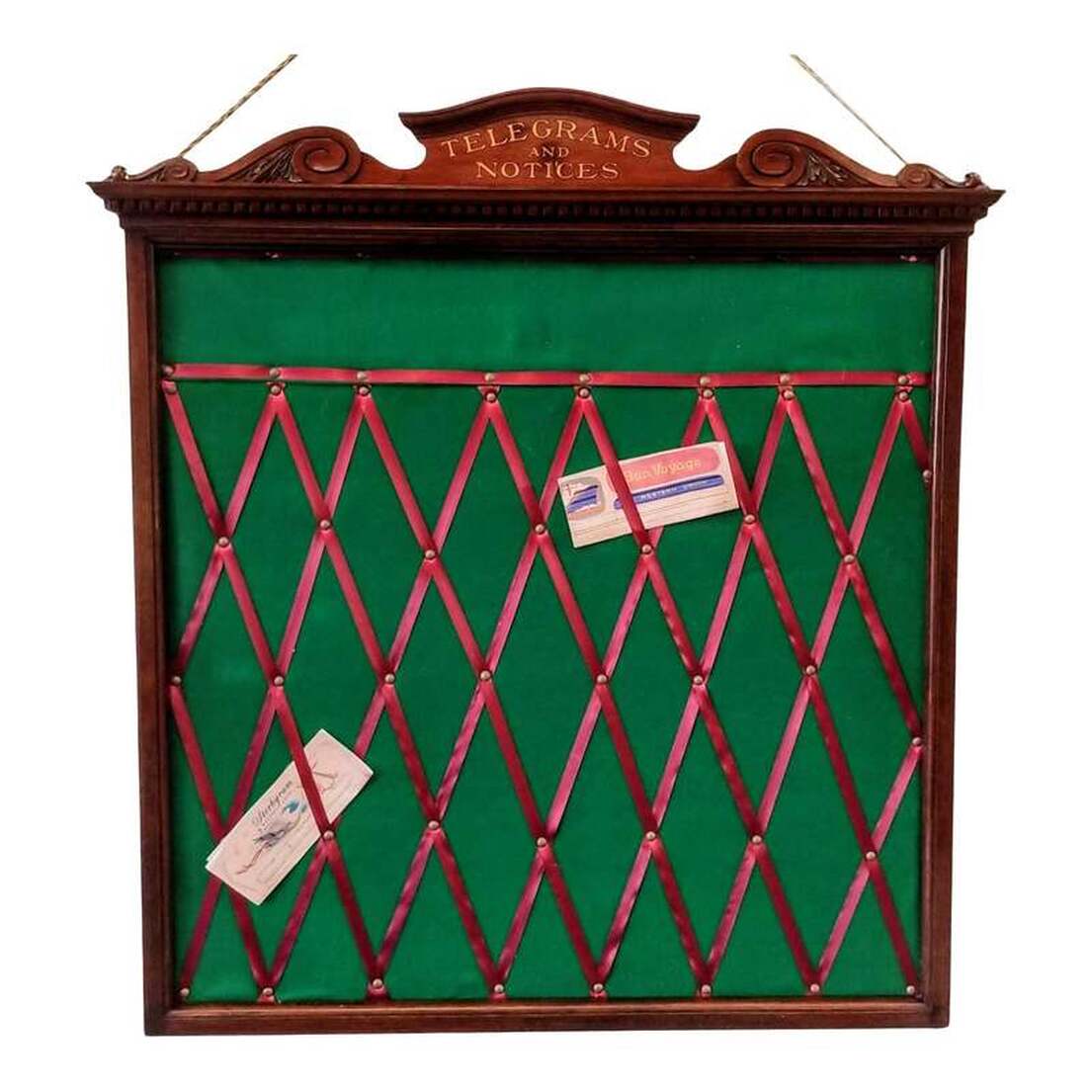
Telegrams and Notices Board | Late-Victorian England
Neoclassical style mahogany wood frame surrounds a center of new felt and ribbon. Under the bonnet top with scrolls and acanthus leaves is lettering spelling "Telegrams and Notices". At the bottom is painted, "This is the property of Mr. A. Vernon Ward".
Click on the photo to learn more.
38.5ʺW × 3ʺD × 41.5ʺH
995
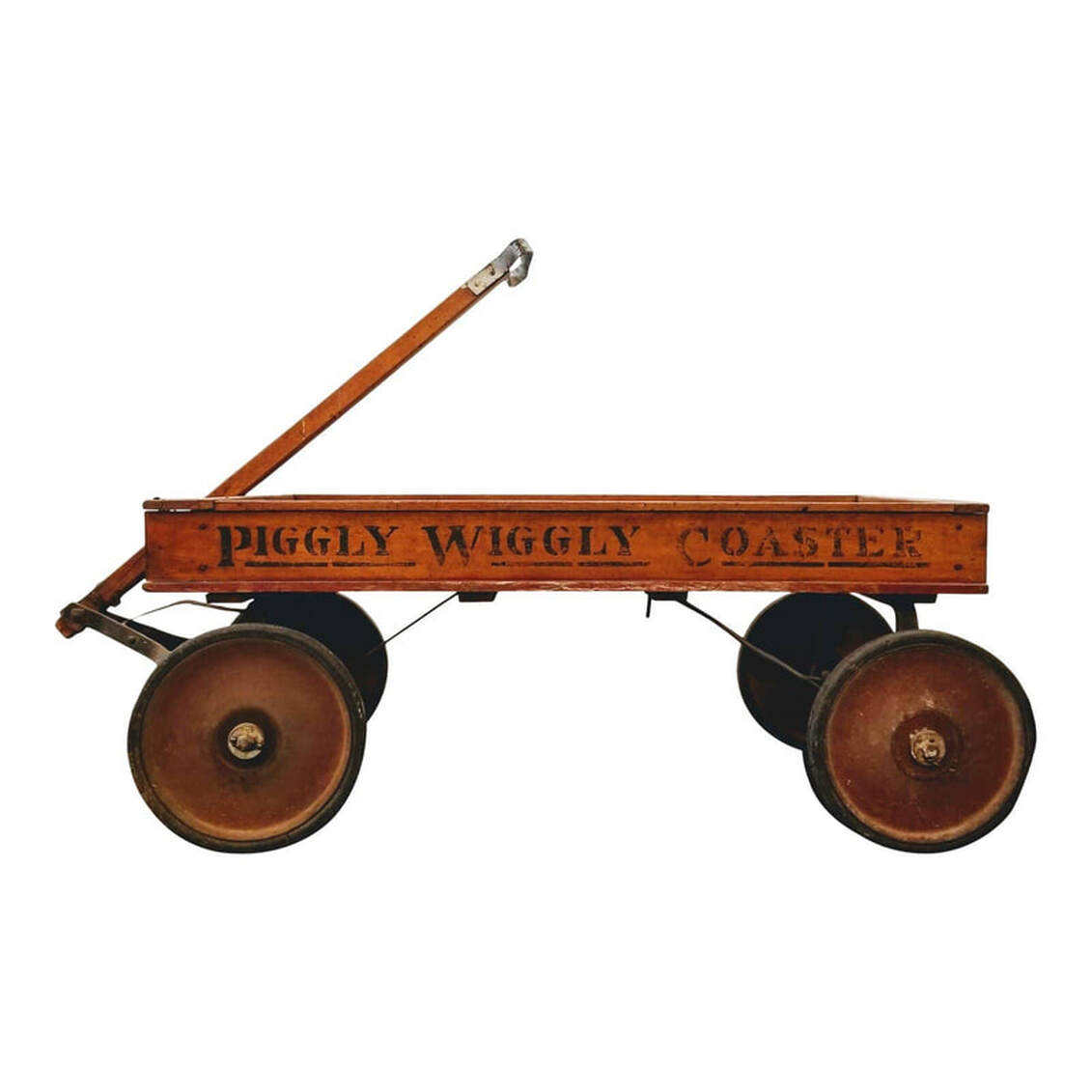
SOLD
Piggly Wiggly Coaster Wagon | San Diego
What a cool piece of San Diego history this Piggly Wiggly Coaster is!
Piggly Wiggly first opened in San Diego in October 1922. In 1926 Jack Hartley opened one on 30th Street in North Park, followed by multiple stores including the one on Park Boulevard (now known as Sprouts), which is where this wagon was acquired.
The wooden wagon retains much of the faded red paint and the black hand painted lettering spelling out "PIGGLY WIGGLY COASTER" on each side.
The wagon is pulled by gripping the steel handle attached to a wooden rod.
The wagon is supported by a steel chassis and has faded red paint on the steel wheels and worn hard rubber tires.
Please note this wagon has seen some use and does show signs of it; however, it is sturdy, rolls smoothly, and is still useful.
Wagon measures 42" long ( 70" long including pull handle ) x 18.25" deep x 15" high ( 37.5" high with pull handle up ).
699
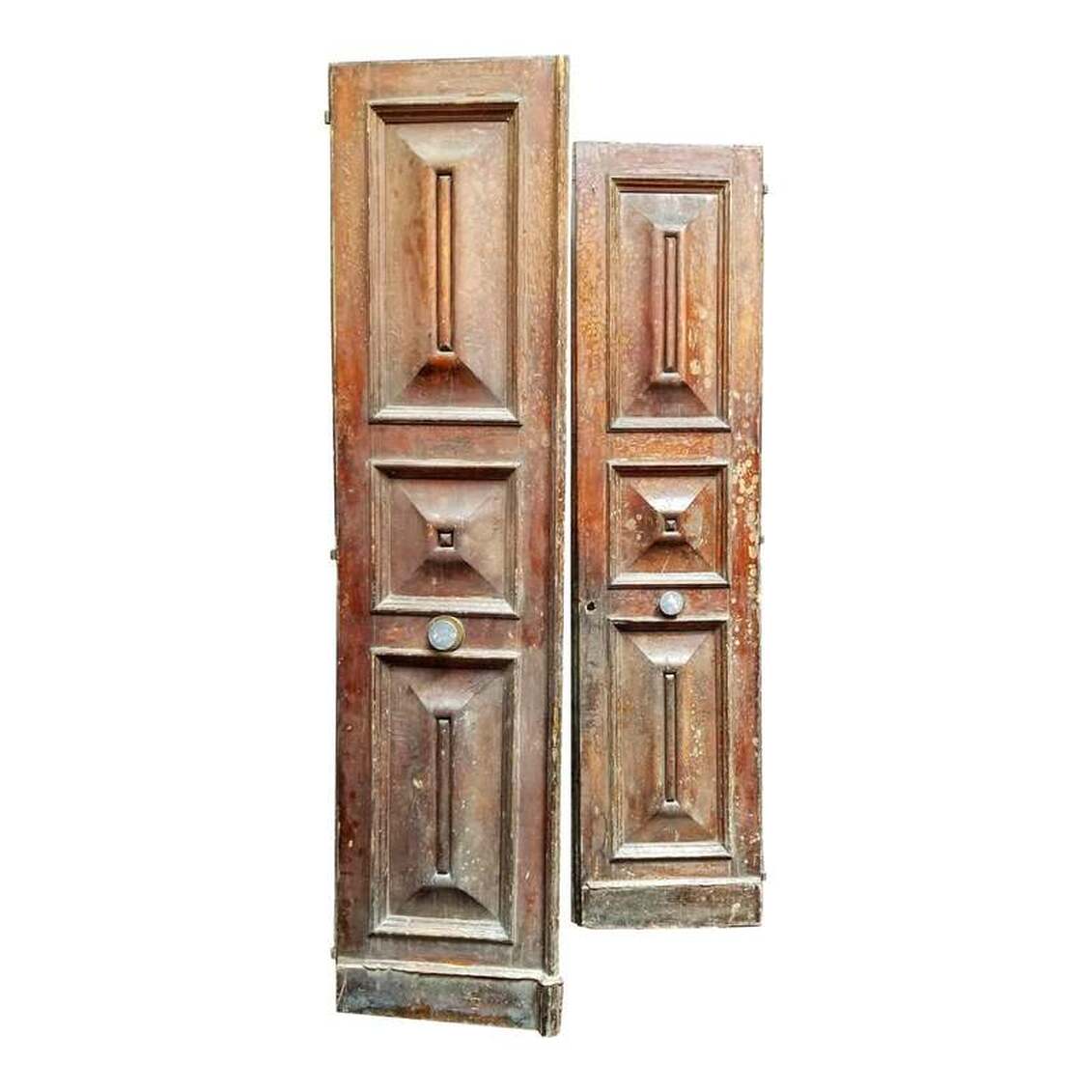
Nineteenth Century French Haussmannienne Double Panel Doors
Baron Georges-Eugène Haussmann was appointed by Napoleon III to conduct an urban renewal of Medieval Paris beginning in 1853. The work carried through 1927.
This pair of French oak panel doors date from the late-19th century.
One side shows the original red paint and zinc door pulls. The second side shows the original cream paint.
Click on the photo to learn more.
26ʺW × 4.25ʺD × 104.5ʺH
sold
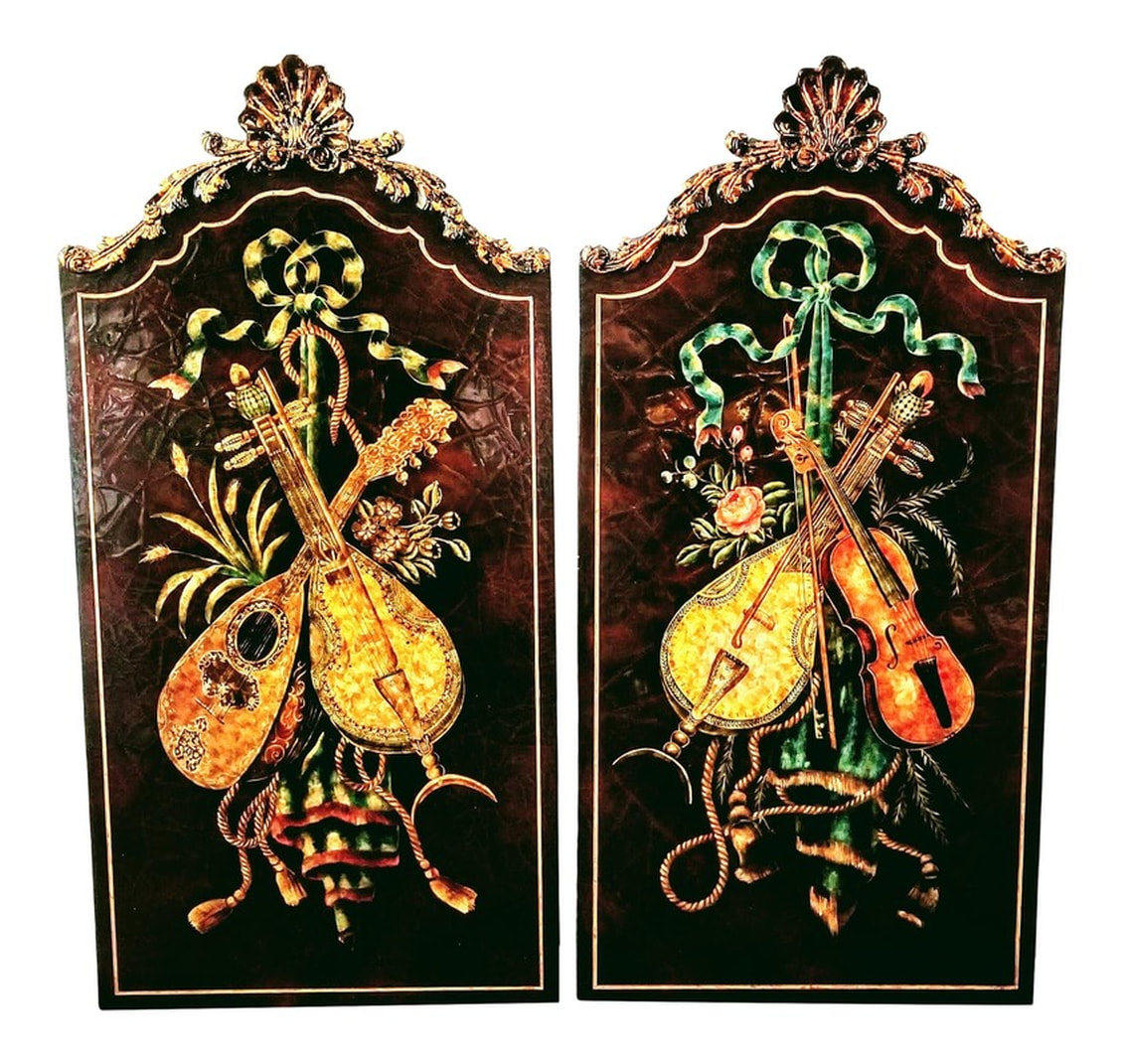
Decorative Wall Panels | Ottoman Baroque | Paul Maitland-Smith
Pair of Paul Maitland-Smith wall panels are in the Ottoman Baroque, or Rococo style, which was brought to Istanbul from Europe by Sultan Ahmed III at the beginning of the 18th century.
The fronts are finished with textured hand painted themes of green ribbons; pink roses and buds; flowers and foliage; gold cords and tassels; folded Turkey work fabrics; and representational instruments of Turkish and European classical music - tambur, violin, and spike fiddles.
The bonnet top is crowned with burnished gold Rocaille decoration including a clamshell and acanthus leaves.
Click on the above photo to learn more and to purchase.
30ʺW × 2.5ʺD × 60.5ʺH
sold
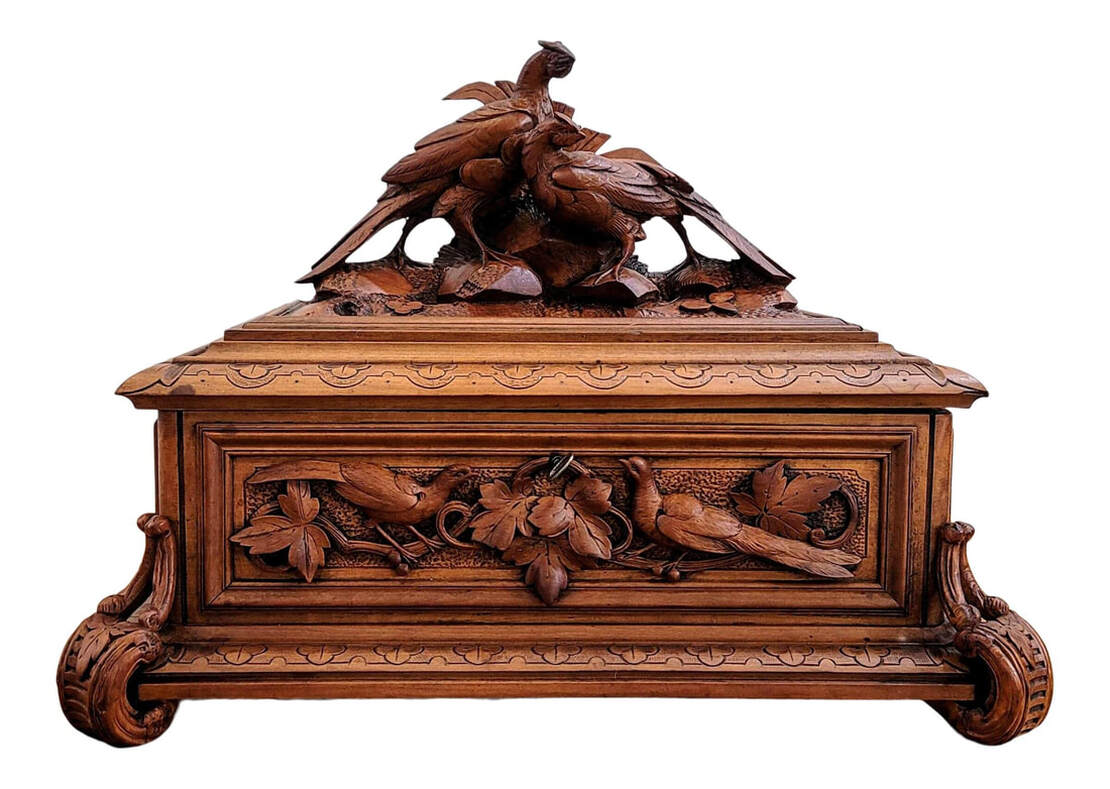
SOLD
Casket | Black Forest Carved | Linden Wood | Switzerland | Late-1800s
Late-19th century Swiss Schwerzwald / Black Forest carved linden wood box.
The hinged lid is topped with a pair of of pheasant birds in a natural setting of earth, stone, and foliage.
The front panel of the box is relief carved with a pair of pheasant birds sitting on grape vines and surrounded by grape leaves.
The sides are relief carved with grapes, grape vines, and grape leaves.
The back panel is plain.
The top and bottom edges feature carvings of trefoils and cyma curves.
The box rests upon four s-curved line-carved feet into which are carved leaves and branch surface treatment.
The interior is lined with cerulean blue silk fabric.
Click on the image above to learn more and to view further photos.
15ʺW × 9.25ʺD × 10.25ʺH
595
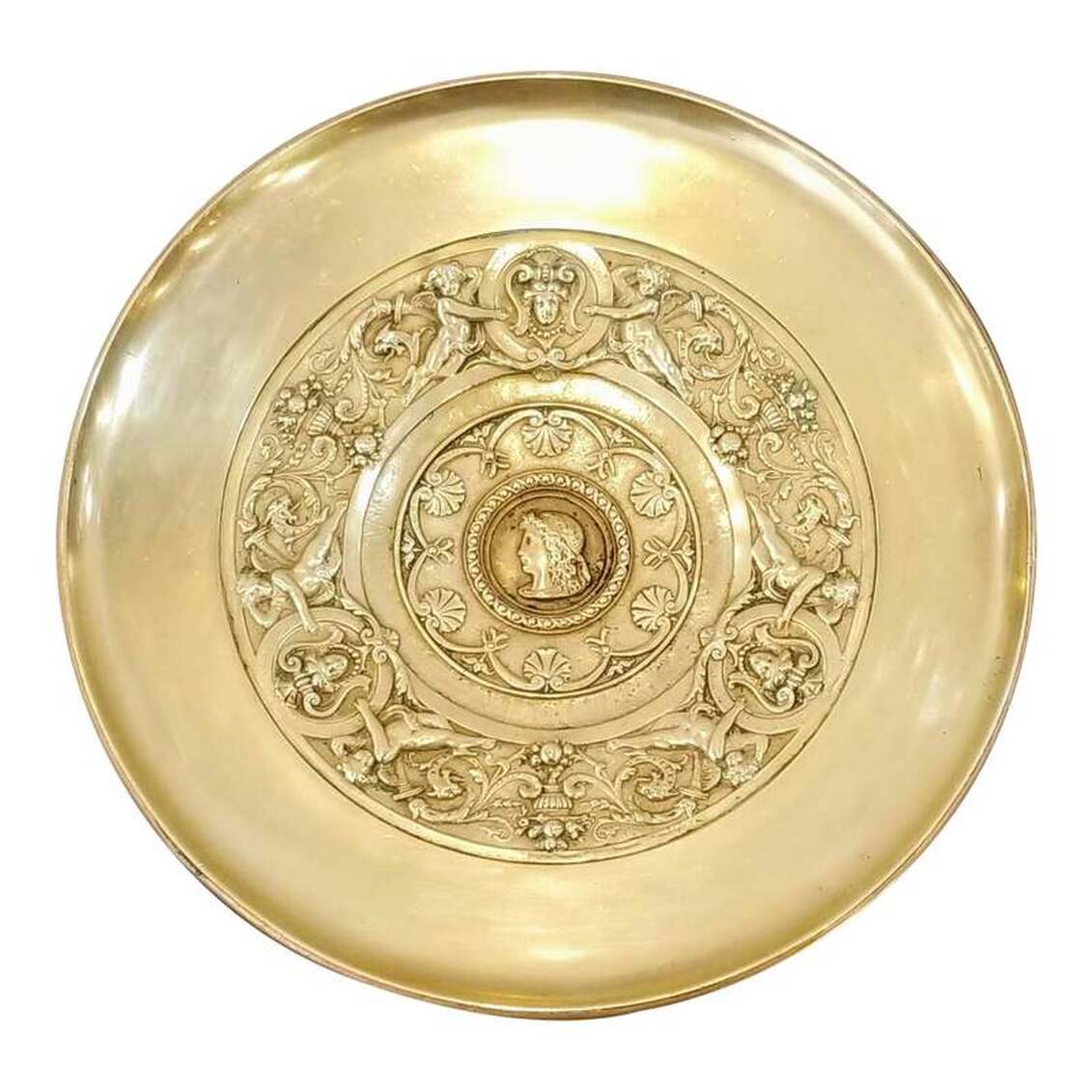
Edward C. Moore Tiffany & Co Makers Neo-Greek Doré Bronze Goddess Athena Tazza on Stand
Antique doré bronze footed tazza in the Greek Revival style popular from the 1830s throughout the 1860s.
The tazza is decorated with symbols of the Greek Goddess Athena. A profile of Athena is at center framed with a guilloche border and an outer anthemion border. The outer ring features three heads of Medusa upon aegises with pairs of cherubs. Classical motifs abound with acanthus leaf arabesques bursting from flaming torches and ending in dragon heads, urns overflowing with fruit, and the previously mentioned design elements.
The makers mark on the bottom of the foot indicates tazza is from Tiffany and Company, is pattern number 0101, order number 5958, and was crafted under the direction of Edward C. Moore as indicated by the style of the "M" included in the stamp.
To learn more, see further photos, and purchase, click on the above photo.
9.75ʺW × 9.75ʺD × 2.5ʺH
2500
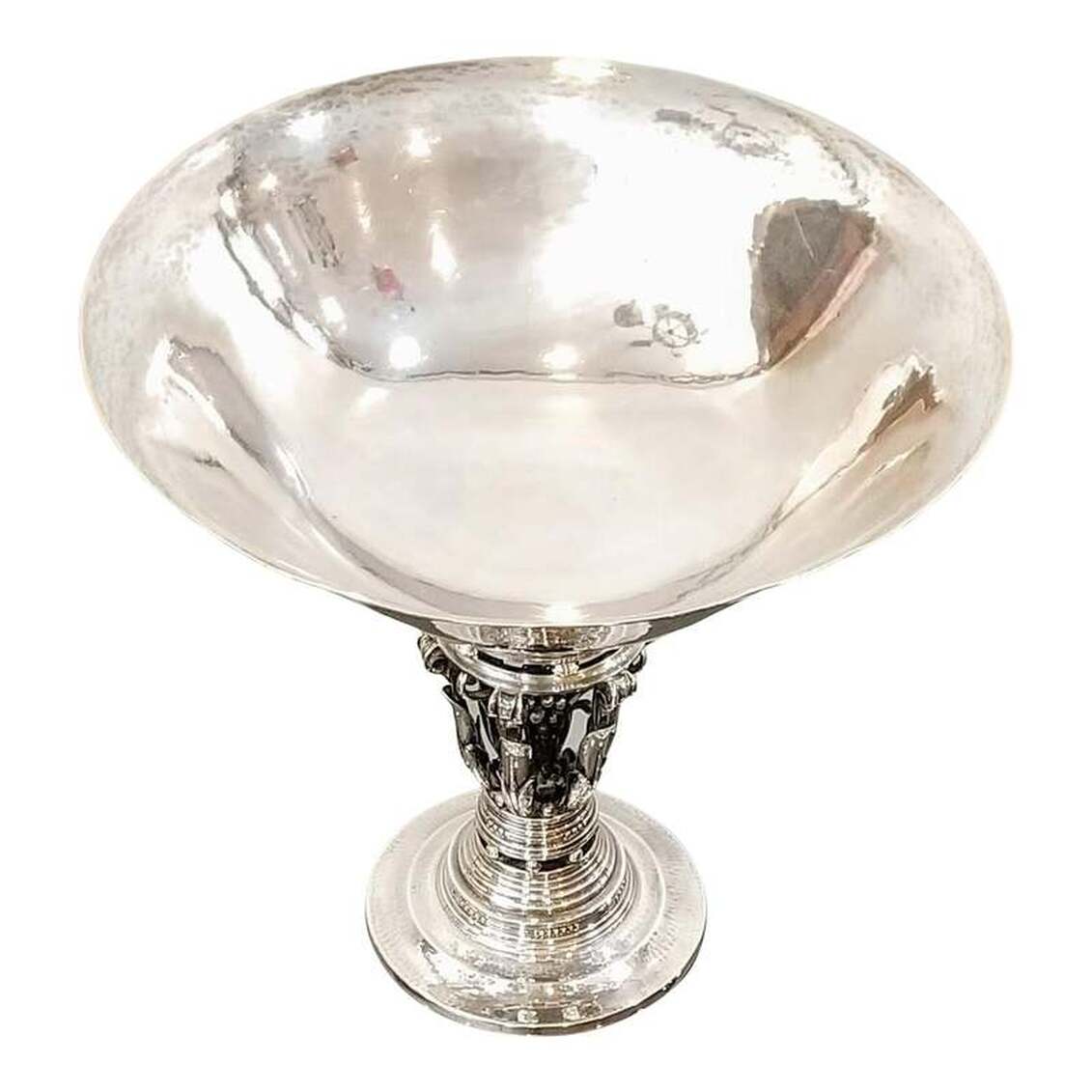
Johan Rohde for Georg Jensen Sterling Silver "Princess" Compote
Johan Rohde designed sterling silver compote crafted by Georg Jensen A/S ( Georg Jensen Sølvsmedie), Copenhagen, Denmark.
The Scandinavian Art Nouveau Danish Silver Centerpiece Pedestal Bowl known as The Princess Bowl was created as a complementary piece to the larger "Kings Bowl" and "Queens Bowl" designed by Rohde in 1917.
The bowl shows a hammered surface with everted rim raised on a stem with a central floral finial surrounded by openwork scrolled leaves and beading, the whole raised on a circular stepped base also showing a hammered surface.
The following maker's marks are stamped underneath the base :
The Johan Rohde mark at top, "STERLING", the "252" model number, "DENMARK", the Georg Jensen crown mark ( used 1925-1932 ), and the "G.I. .925 Sterling" mark ( used 1915-1930 )
Centerpiece measures 9" high and 10.25" in diameter.
This footed bowl is pictured on page 52 in the book "George Jensen : Scandinavian Design For Living" published by The Art Institute of Chicago.
sold
To learn more, view further photos, and purchase, click on the above photo.
